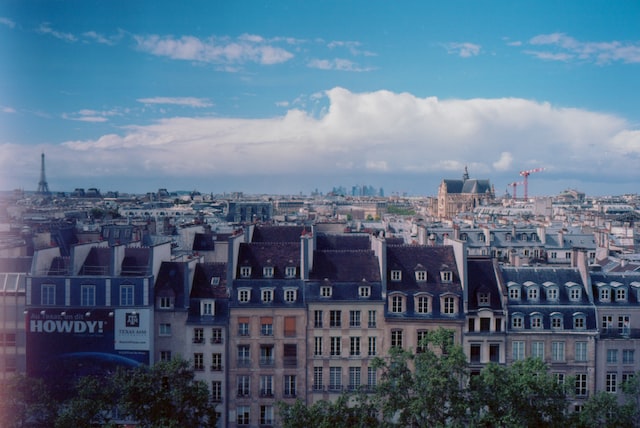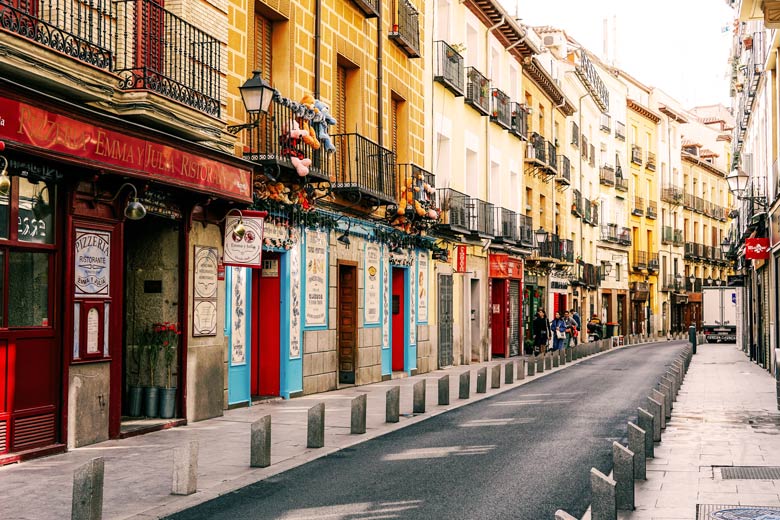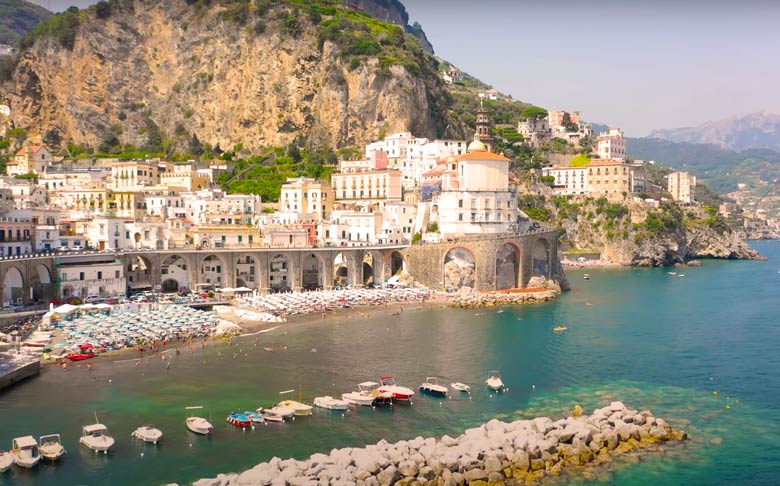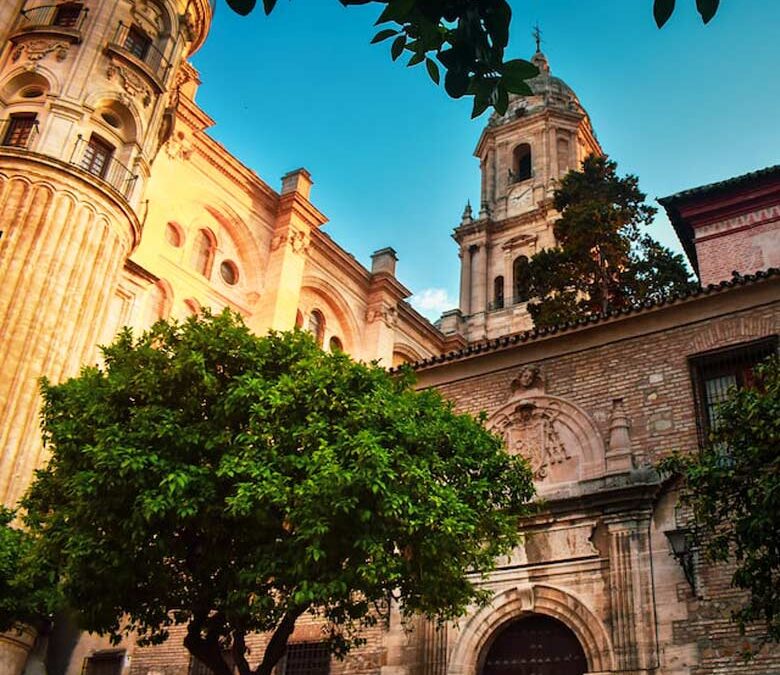The Centre Georges Pompidou is one of the most distinctive structures in contemporary architecture, was designed by Renzo Piano and Richard Rogers. Their innovative and daring ideas significantly improved the structure’s visual impact.
Renzo Piano and Richard Rogers aimed to accomplish something with the project that would elevate the field of architecture to a new level. Today, many tourists still come to the structure to see the Pompidou’s architecture.
President Pompidou’s Artistic Legacy
The first president to really consider architecture and art was Georges Pompidou, who included them in his political platform. He aspired to leave an enduring legacy in Paris’ urban planning as a renowned modern art collector. His choices, like those of the other presidents, are debatable, yet they still leave a legacy.
Innovative Architecture: The Beaubourg Competition
An international competition was launched in 1970 to determine the winning project for the Beaubourg neighborhood. In the end, the composition by British composer Richard Rodgers and Italian Renzo Piano was picked. More than three years after Pompidou’s untimely death from a rare form of leukemia, work on the project started in 1972 and continued until 1977.
The Modern Design of Pompidou Center
The modernity of the building is due to the fact that the architects “emptied” the interior of all the elements that serve a building. To begin with, the accesses: the elevators and staircases are exterior, so they are attached to the wall facing the square, the main entrance to the Pompidou Center.
The ventilation pipes, the water pipes, the pipes containing the electrical and telephone cables, everything is located on the outside of the building. It has been said that what you see on the outside of the Pompidou Museum is what is normally located on the inside, hidden, covered by the facade. Let’s imagine a jacket, that we turn it inside out as if it were a reversible garment, without being reversible. In doing so we would see the lining, the seams, the shape of the pockets, we would see the rivet of the buttons and the zipper upside down. It is a good simile to describe the Pompidou Center.

Did You Know?
The Colors of Pompidou Architecture
Another very important feature of Pompidou architecture is the use of color. The colors of the building, applied to the structural elements, are very visual and easily distinguishable. The colors are very vivid and stand out in a typically Haussmannian neighborhood of the 19th century. At first the mix did not seem possible, but today the contemporary sculptures of the ponds and the square surrounding the Pompidou Center have been associated, if not with harmony, at least with respect. The immense red and green, blue and yellow pipes give a very useful note of color in the gray Parisian winter. Each pipe has a color that corresponds to its purpose; for example, green pipes carry water, red ones carry elevators and fire pumps, blue pipes carry air conditioning and ventilation, and yellow pipes carry electrical and telephone wires.
The Pompidou Museum’s Interior
But let’s not forget that Centre Pompidou architecture is not just about the structure and color of the building, the interior is also stunning. The interior is very spacious and bright and is perfect for exhibitions.
The hall created on the first floor is immense and gives access to all parts of the building, including the huge library specializing in art, visited every year by thousands of researchers and art historians.
The building is covered by a metal skeleton which, being located “outside” the construction, allows the interior spaces to be large and very little disturbed by pillars and columns. In this way an inverse effect to the exterior impression is achieved. Inside everything is smooth, flat, diaphanous and luminous, ideal for a museum, especially if we consider that it is a contemporary art museum. The works stand out in the stillness of the spacious rooms. Unlike the Louvre, where the building itself is a work of art, the interior of the Pompidou does not condition the works on display, which sometimes would not be out of place to give interest to exhibitions that are not very understandable.

Panoramic Views from Pompidou Center
Also noteworthy is the elevator that is staggered against the building. If its appearance is not at all interesting from the outside, from the inside it produces a much more positive impression. The author is reminded of the aesthetics of Stanley Kubrick’s film A Clockwork Orange, which was shot at the time the building was constructed.
The views are magnificent from the elevator, which is actually an escalator, as the square frees up a space that allows us to have a much clearer view. In addition, as the height of the Pompidou is higher than that of the buildings in Paris, the Beaubourg Museum is a good vantage point to see the rooftops of Paris.
The Hidden Terrace of Pompidou Center
The building also has a little secret. If you walk behind the building, you will find a terrace with a view over the city and an unrivalled panorama.

Read More About:
Nusa Penida Island – Indonesia Travel Tips – Full Guide
A New Chapter for the Pompidou Center
In 2010, another branch of the Pompidou Center was inaugurated in Lorraine, in the city of Metz. This opening is part of a policy of decentralization of the major museums in Paris. However, the measure goes more in the direction of exhibiting a good part of the huge collections accumulated in the deposits. Obviously the masterpieces will not leave Paris.
The Uniqueness of Centre Pompidou Architecture
The building had many critics who thought that the architecture was too rough and untidy, but this opinion is still a matter of debate today. However, the building is one of the most famous examples of Pompidou architecture, proving that modern architecture has no limits.
The Centre Pompidou is unique and exciting, and we are sure that it will continue to serve as one of the most interesting examples of architecture in the world for many years to come. The building has no equal and therefore occupies a special place in architectural history.
The architects of the building knew that the Centre Pompidou would be one of the finest examples of modern architecture and that it would remain a tourist destination for many years to come. Its presence in the city offers a unique experience for all visitors, and it is well worth a visit to experience the magic of Pompidou architecture in person.
Common Questions:
Q: What is the Pompidou Centre?
A: It is a very unusual, modern building whose designers, Renzo Piano and Richard Rogers, came up with some very bold and creative ideas to enhance the visual impact of the building.
Q: What was Georges Pompidou’s first president’s goal in the field of art and architecture?
A: He was the first president to take art and architecture seriously, incorporating them into his electoral programme.
Q: Why is the Pompidou Centre considered one of the most modern buildings in modern architecture?
A: The architects “emptied out” the interior, so the elevator, stairs and all other utility wiring are outside the walls, which is very unusual in modern architecture.
Q: Why was the use of color important in the architecture of the Pompidou Centre?
A: The colors are very striking and distinctive, making the building more visually interesting.
Q: How is the interior of the building?
A: Very spacious and bright, perfect for exhibitions, yet clean and simple.
Q: Why was the construction of the Pompidou Centre controversial?
A: Because the designers came up with ideas that were shocking to many people.
Q: What is the view like from the Pompidou Centre?
A: It’s great because it’s taller than other buildings in Paris, so from the Beaubourg Museum you have a good view of the city, one of the most iconic districts, the Marais, and also the Sainte-Chapelle and Notre-Dame cathedrals.












